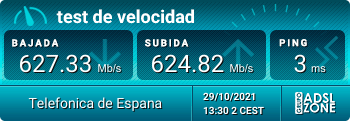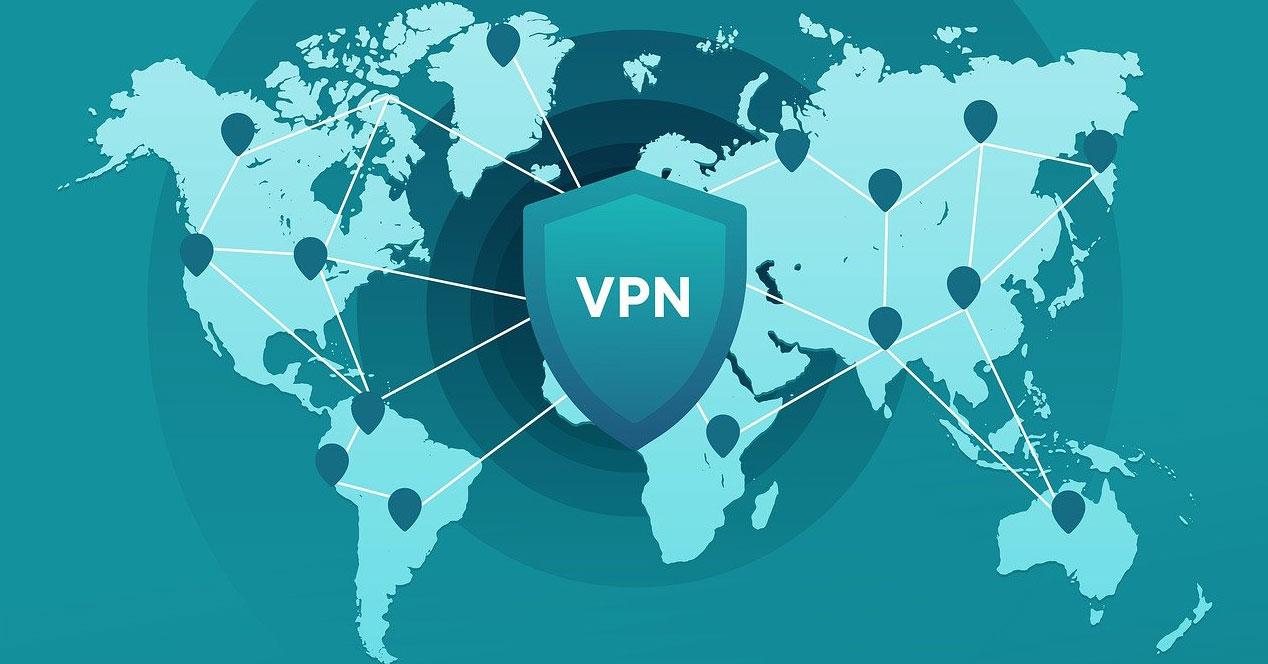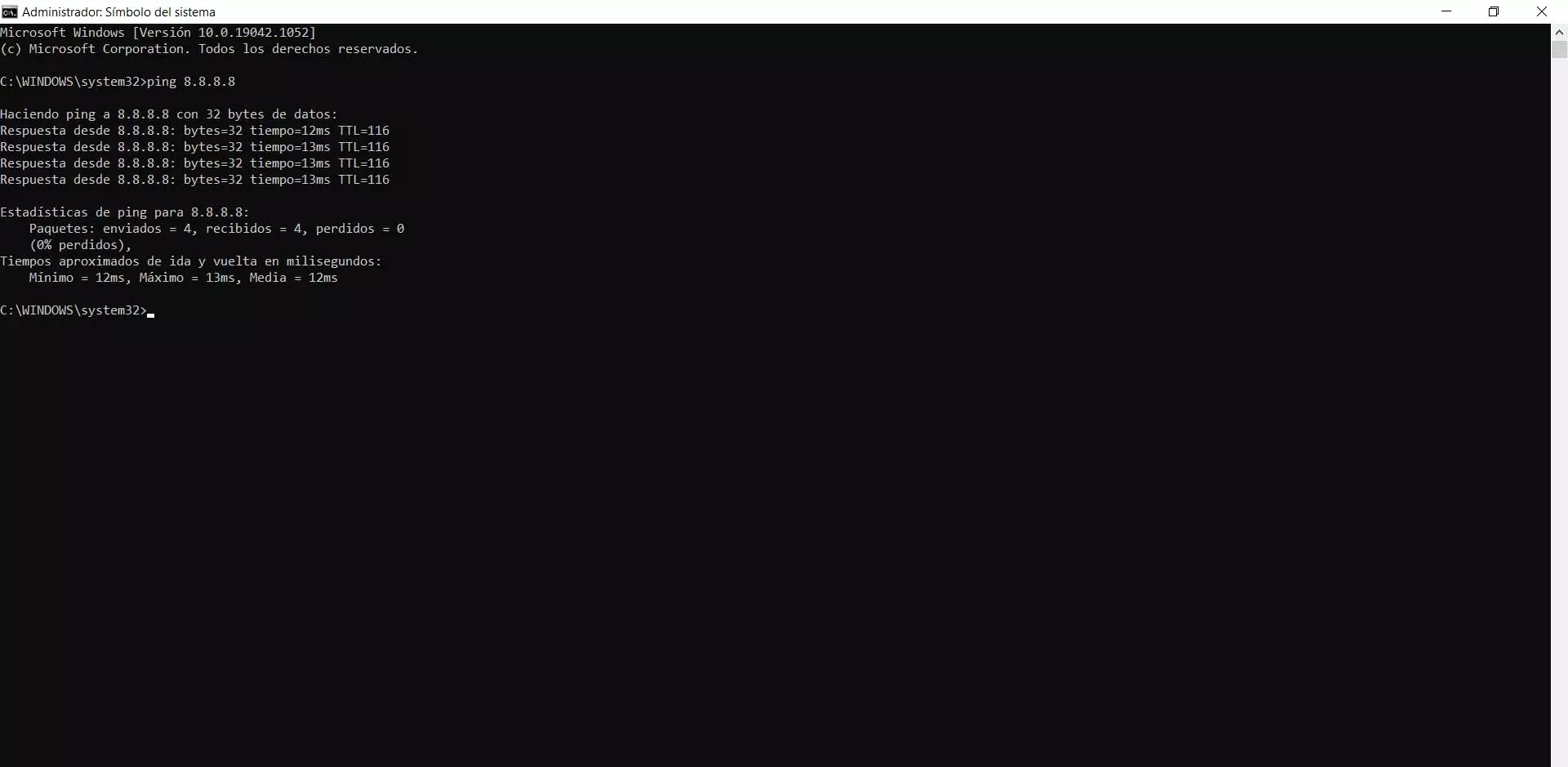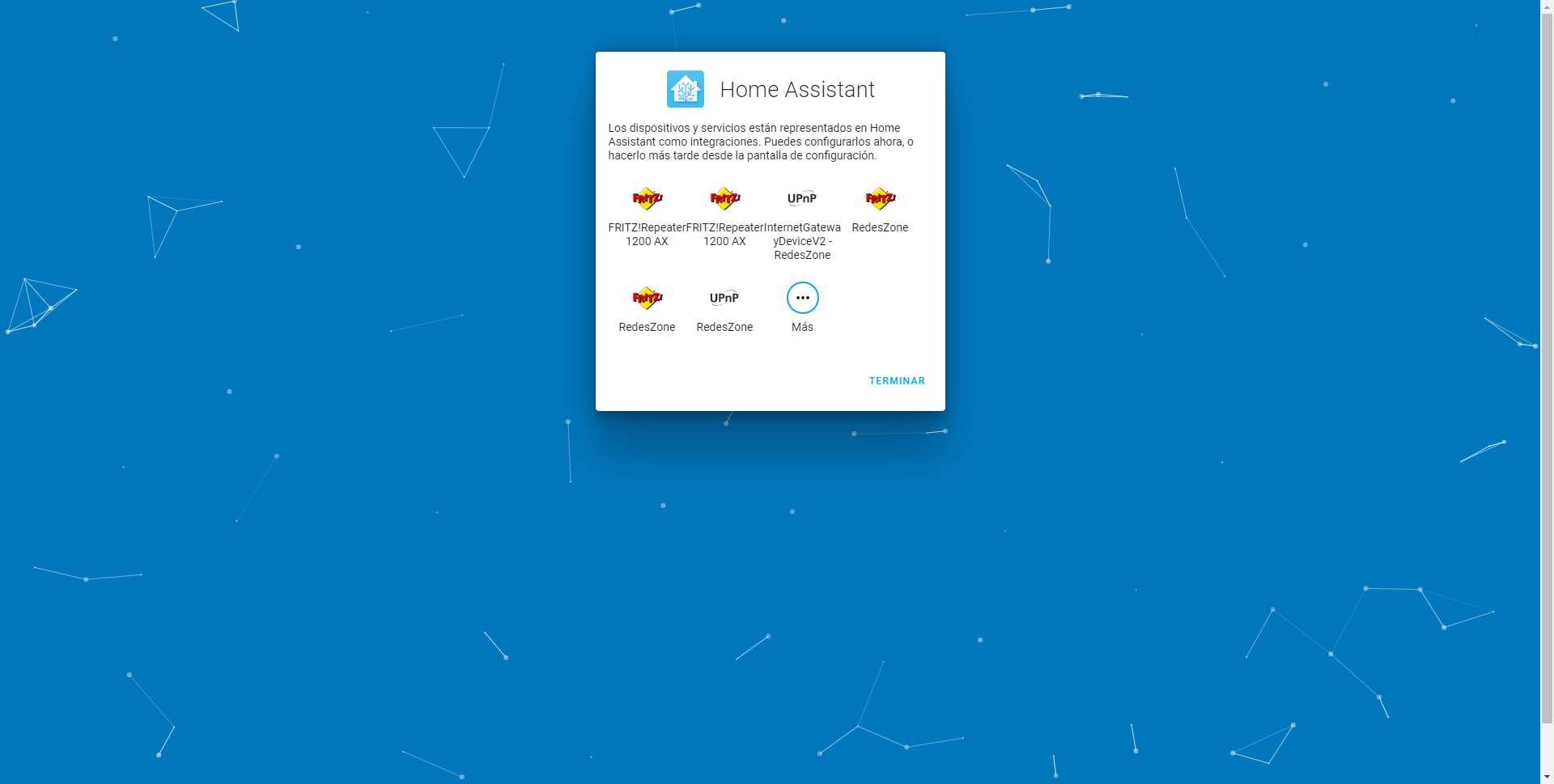Podcasts remain one of the most consumed content today, a feature that makes them an excellent communication resource and a stable source of income. Learn the secrets to launching a thriving podcast on Spotify in 2024. This guide covers everything from concept and branding to recording, editing, and distribution. Dive in and discover proven strategies to build a loyal audience and make your podcast a success.
Digital marketing keeps constantly renewing itself, adapting to sudden changes in consumer behavior. These updates force companies to devise and adapt new marketing strategies to maintain the connection with users, resulting in the popularization of podcasts as communication channels.
The opportunity to consume content in audio format is practical and easy to include in everyday life. This situation opens the doors to a new world of possibilities for the development of your favorite niche; since you have more opportunities to make it a success.
Want to learn what it takes to make a podcast on Spotify? Then stick with us! We’ll teach you everything you need to create a successful podcast from scratch and monetize it. We’ll also answer frequently asked questions like: How much money does a podcast on Spotify make, How to make my podcast successful, and How to make a podcast go viral.
How to make a podcast on Spotify (SUCCESSFUL) 2024
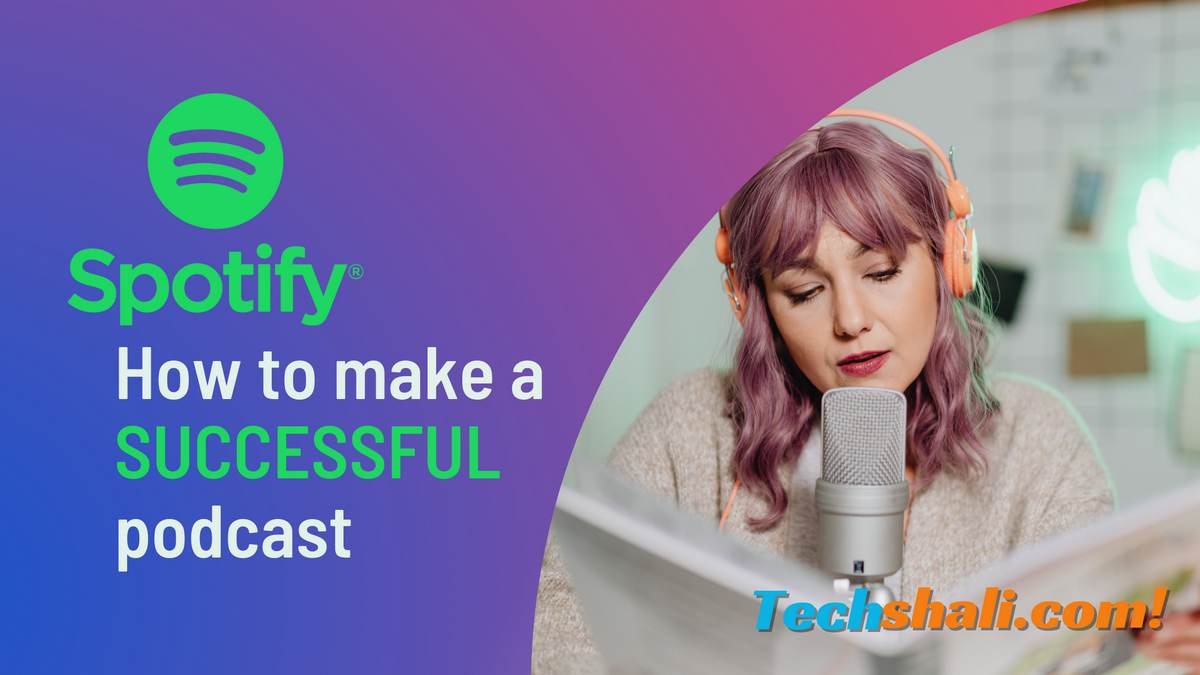
Steps to make a podcast in Spotify in 2024
The steps for creating a podcast are similar to those for any media content, so you’ll find most of them simple and intuitive. We’ve divided the general process into three parts, so you’ll learn how to make a podcast on Spotify from scratch without skipping any important details.
Let’s get started!
PART 1: Creative Process
Before recording a podcast you should establish a visual identity and plan the stages of your recordings by following these steps:
1. Determine your objectives
Having clear objectives for the podcast will allow you to specify the following phases of the project and obtain favorable results, which will lead you to achieve the established goals. Among the objectives of the podcast may be: increase the reach of your brand, show the brand’s experience in the market or demonstrate to the audience that you are an expert on a certain topic.
Also see:
2. Define your buyer persona
Now that you know why you are going to make a podcast, you need to define who you are creating it for, that will be your buyer persona. Establishing the profile of the audience that will listen to your content will help you create the structure for the format, select the topics of interest and even the tone of the podcast.
The buyer persona will allow you to develop mechanisms to offer more engaging content and check if the podcast is heading in the right direction. Remember that podcasts require people to want to hear what you have to say, which only happens when you speak directly to them: sharing the same interests, making them laugh, discussing popular topics, supporting them in their goals or healing their pain.
3. Choose the type of podcast
Your podcast needs to have its own identity to differentiate it from similar programs and make more users want to listen to you. To achieve this, you can combine several styles that have the same nature and that adapt to the taste of your buyer persona; this way you will achieve a novel result in a simple way.
A practical way to choose the type of podcast is by analyzing how your buyer persona consumes content and what their main topics of interest are. Once you define these questions, you will be able to know the approach and tone that your podcast episodes should have: journalistic, informal or with internet jargon. This will be your secret to catch your target audience!
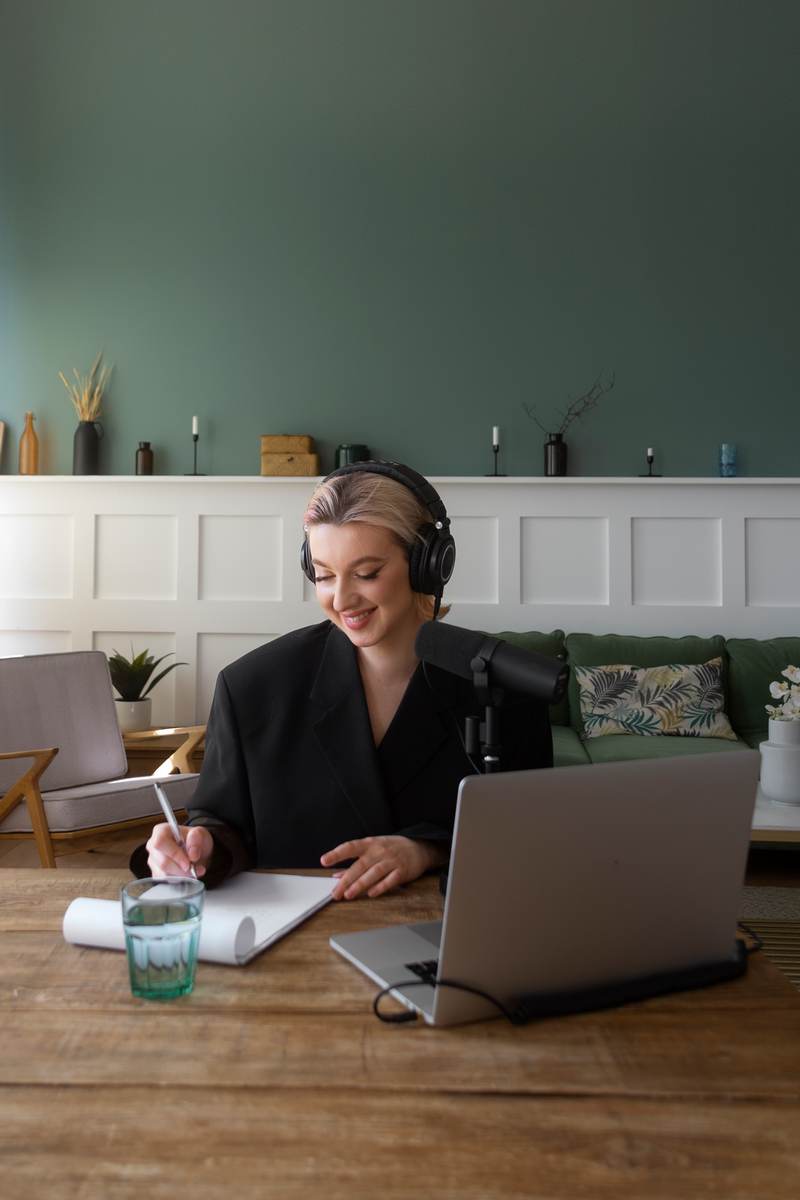
PART 2: Podcast Identity
Creating the podcast’s brand identity is critical to its success, as it will generate greater audience appeal. Although we know you want to start recording content right now, we suggest you spend some time creating the branding. To start, you can analyze other podcast brands related to your buyer persona to get inspired and learn what you can do to improve it. Here’s how you can start creating your podcast identity:
1. Choose the name
The name of the podcast is one of the most important elements to define, since it must encompass a series of parameters. To begin with, it is essential that it is easy to remember, simple to write and pronounce, since this way you will increase the probabilities that casual users will remember you and come back. Consider these tips to define the name of the podcast:
- Know in depth the value proposition of your podcast.
- Define and know who your buyer persona is.
- Check if the chosen name is free or belongs to a registered trademark.
- Check if the user name and domain are available.
2. Define your logo
The first thing you have to do is to define the type of graphic resource you want to have in your podcast: geometric, illustrated, abstract or some other style. The process to design the logo must be well thought out and developed, since it will be part of the visual identity of the podcast and cannot be modified immediately.
When designing your logo, you need to consider the spirit of your brand, your buyer persona and the general image you want to project. For example, a podcast that deals with serious topics will require a neat and minimalist logo, while an avant-garde or entertainment podcast may use an extravagant logo. The important thing should always be that the logo represents the podcast’s brand, so that it has an effect on your audience.
3. Establish the frequency and duration of the episodes
Define your content creation strategy so that you keep your audience interested, but without overwhelming them. To achieve this, consider the following factors:
- What is best for you?
- Will your time be managed effectively?
- Do you have the resources to record weekly episodes?
- How will you edit the episodes, based on the length of time?
The answers to these questions will help you define the best strategy for posting content, taking into account the human resources and time you have available.
4. Structure the script
Top-notch podcasts have one thing in common: they have scripts that allow them to express relevant ideas clearly, more fluently and without forgetting important aspects. A script will help you get the message across to the recipients and help them understand it in the right way, thus avoiding the misunderstandings that abound in social networks.
Many podcasts have annotations, jokes and unforeseen anecdotes that offer an air of informality and spontaneity to the content; but it’s all part of the script. In order to improvise, it is necessary to know the central theme of the conversation, update it based on certain standards and develop it along a path. When structuring the script you should consider that the less obvious it is, the better the result will be.
The structuring of the scripts is able to provide some benefits, such as:
- Facilitate the process to capture ideas and improve them when necessary.
- Enables the organization of topics, helping to address them in a better way during the recording.
- Helps to optimize time, since it is possible to eliminate introductions to address the topic directly.
- Improves communication with the audience, which generates nurturing live interactions.
Also see:
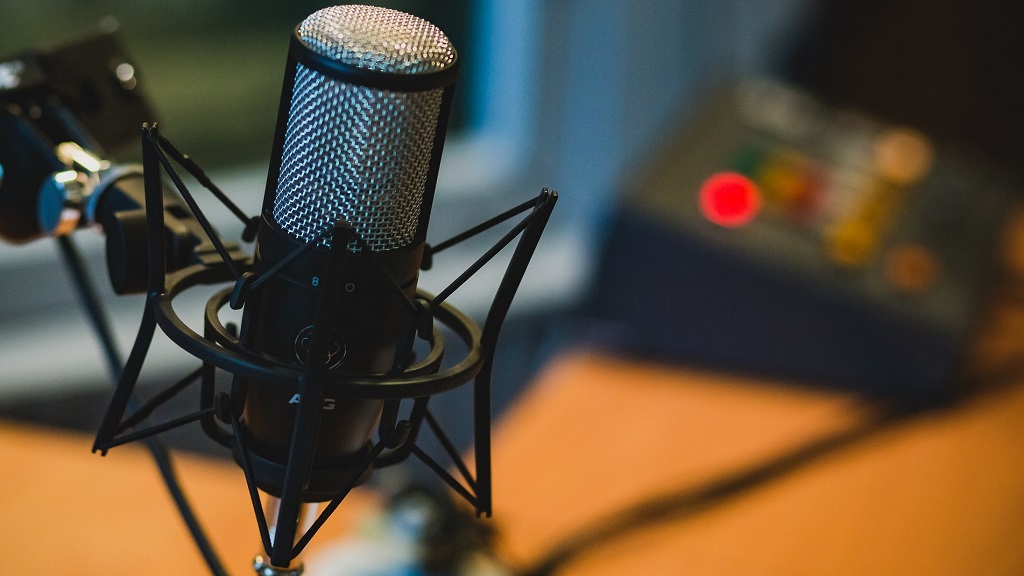
PART 3: Creating and executing the podcast
Now that you have analyzed and defined all the elements your program needs, it’s time to create your podcast!
1. Open a Spotify account
To start creating content for Spotify, you need an account on the platform. Do this by following the steps below:
- Log in to the official Spotify website.
- Click on the Sign up button in the top right corner.
- Choose the registration method of your choice: Google, Facebook, Apple or email account.
- Fill in the form with your username, date of birth and gender. Then click the Next button.
- Read the platform’s terms and conditions of use and privacy policies before checking the acceptance box. If you agree, click Sign Up.
Now that you have created a Spotify account, you will need to use it to complete the registration on the Spotify for Podcasters site, where you will record, host and edit your content:
- Create an account for podcasters by clicking on this link.
- Click the Sign Up button, located in the upper right corner.
- If you are going to create a podcast from scratch, click the left button I want to start a podcast. In case you already have a podcast hosted on another platform, but you want to publish it on Spotify, click the right button I have a podcast.
- Choose the method you used to create your Spotify account, as you will need the same registration data to log in.
- In the new window you will be notified that Spotify will connect to Spotify for Podcasters, click the Continue to application button.
- Accept the Spotify for Podcasters terms and conditions that will appear in the pop-up window.
That’s it! You can now start using all the resources available on the Spotify for Podcasters site.
2. Record a podcast episode
To offer the highest level of quality in a podcast, the ideal is to use a recording studio; although you can get excellent results by using the right equipment and following a few tips. To begin with, the environment should be free of external noise or white noise that would diminish the quality of the audio. We suggest that you do a test before you start recording, so that you have an idea of the final result.
It is important that the microphone with which you record is able to offer a quality result, so you must choose the most suitable for your needs. The advantage with microphones is that in the market there are very complete affordable options; you just have to choose between a dynamic or condenser that fits your budget:
- Condenser microphone: They are used in the music industry, due to its ability to capture environmental sounds with greater amplitude; so it provides incredible results when used in places with little external noise. Its pickup range makes it the best choice if several people will record the podcast and only have one microphone.
- Dynamic microphone: They are mostly used to capture live voice, being the most popular in concerts, shows or radios. Dynamic microphones are characterized by being directional, which allows to clearly capture the speaker’s voice while filtering ambient sounds.
3. Sign up for a hosting platform
Although Spotify is the most popular platform for listening to podcasts, the reality is that it does not host any audio files. Its function is to provide access to podcasts hosted on other sites, allowing them all to converge in one place.
There are many platforms for hosting podcasts, each with different features, which is why you should carefully choose the one that best suits your needs. Before choosing a service, make sure you know the amount of storage it offers and the stability of the platform.
Free hosting platforms:
- Buzzsprout
- Acast
- PodBean
- Pinecast
Paid hosting platforms:
- Castos
- Bluebrry
- Pedigee
- Megaphone by Spotify
The best option to start hosting your podcasts is Spotify for Podcasters, Spotify’s proprietary hosting platform formerly known as Anchor. The service is not only completely free, but also has multiple benefits that will help you get a higher quality result:
- Automatic distribution to Spotify and other similar platforms.
- Recording and editing of programs within the platform.
- Availability of sound effects, musical backgrounds and additional material.
- Options to easily sponsor podcasts.
4. Upload your podcast to Spotify
If you chose Spotify for Podcasters as your hosting platform, you can upload the episode directly to Spotify by following the steps below:
- Login to Spotify for Podcasters website
- Click the Get Started button
- On the next page click the I want to start a podcast option, then a form will load where you will need to log in with your Spotify, Google or Facebook account. In case you don’t have an account yet, you can create one by clicking on Sign up.
- Download the Spotify for Podcasters app on your iOS or Android mobile device.
- After logging in or completing your registration on the website, click the Open button in Spotify for Podcasters and the app you just downloaded will automatically open.
- Click Sign in and then click Continue in Spotify for Podcasters. You will now need to enter your Spotify email and password to access the platform.
- Read the platform’s Terms of Service and Privacy Policy. If you agree, check the box and click the Save button.
- The creator dashboard will open, where you can record episodes directly, host your audio files and edit all content. Once everything is correct, click Save.
- Fill in the form with information about your podcast: episode title, geographic location, content description, main language, categories, subcategories, among others.
- Attach the cover that the podcast will have and that will complement the visual identity of your brand.
- The platform will ask you if everything is ready for the episode to be distributed. If you agree, click the Submit button to post it. The Spotify team will review the podcast content before activating it, a process that may take a couple of hours. Once approved, the platform will publish the episode without sending you any notification, so stay tuned.
That’s it! You have published your first podcast episode.
In case you are going to use a different hosting platform, you will have to follow these simple steps:
- Upload your podcast episode to the hosting platform you chose.
- Copy the RSS link, this works as a unique feed or address for the podcast.
- Paste the RSS link into the Get Started section of Spotify for Podcasters and fill in the episode information.
- The platform will send you an email with an 8-digit verification code, paste it into the form to confirm you are the owner of the podcast and wait a few seconds while the platform checks the connection.
You’re done! You have published your first podcast episode.
5. Parameters for publishing
To make your podcast more relevant to users and the platform, you need to use the basic publishing parameters for each new episode:
- Timely, informative and attractive title.
- Cover page with 1:1 aspect ratio in JPEG, PNG or TIFF format encoded without loss of quality. Image must be at least 640 pixels in height and width, with the highest quality available.
- MP3 format with maximum bit rate (192 kbps or higher).
- Episodes must not exceed 12 hours.
Also see:
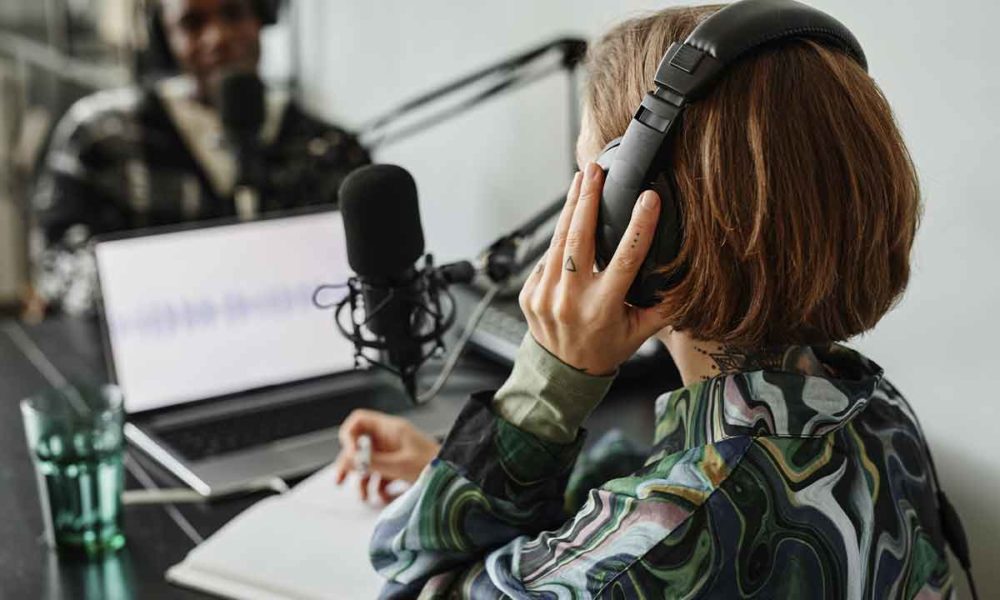
How much money can I make with a podcast on Spotify?
At this time there is no calculator that can accurately estimate how much money you can make from a podcast. However, there are some preset amounts with which it is possible to estimate a calculation. So, how much money does one make from a podcast on Spotify? Let’s see:
Spotify uses a payment system similar to other social networks like YouTube or TikTok, known as “pay per thousand plays model” or CPM for its acronym in English. With each reproduction you will receive between $0.003 and 0.025 USD, which means that for every 1000 reproductions you will generate between $3 to $25 USD. The accumulated earnings are shared in a 70/30 proportion, so you will receive 70% as the owner of the podcast and Spotify will keep the remaining 30%.
A very important fact that you should keep in mind is that the amount of money paid by the platform per thousand plays varies according to the country of origin. For example, the CPM in the United States is $25 USD while in Mexico it is $4 USD; figures that significantly alter the earnings you can get for each chapter of the podcast depending on the country where you live.
Methods to monetize a podcast on Spotify
- Advertising: You can include paid ads in each new episode of your podcast. To generate revenue, you will need to find sponsors willing to work with you or use online advertising platforms.
- Sponsorships: Establishing collaborations with brands or companies to promote their products or services during the recording of your content is one of the most lucrative methods to monetize a podcast.
- Related products or services: Sell products or services related to the content or central theme of your podcast, such as: books, comics, online courses, coaching, among others.
- Memberships or subscriptions: Offering additional benefits or exclusive content to subscribers who pay a monthly, quarterly or annual fee will allow you to generate extra income while establishing a closer connection with your followers.
- Donations: Subscribers can make voluntary donations to support your content, through platforms such as Patreon, Kickstarter or Ko-fi.
Tips to make a successful podcast on Spotify
If your intention is to make money with a podcast, you are probably wondering how to make my podcast successful? Since it will be the goal that will allow you to achieve the objective you are looking for. To be successful it is essential that the podcast is built on dedication and planning, as in any content creation project. Here are some tips that will boost the success of your podcast:
1. Choose a catchy name
The name of the podcast is one of the most important elements within the brand identity, because it must harmoniously combine these characteristics: to be attractive, curious, informative and easy to learn.
The name of the podcast must invite users to enter the profile to learn about the content you create, consume it and become loyal followers that will eventually lead you to earn money. When thinking about the name, take into consideration the following guidelines:
- The name must be less than 4 words.
- It must summarize or allude to the niche of the podcast.
- The name must not include the word “podcast”.
- There must not be another podcast, YouTube channel or social media account with the name chosen for the program.
- Each word must be spelled correctly, except in cases where the word structure is modified to adapt the aesthetics to the branding.
2. Choose a niche
This is the most important element of the podcast, because everything you do will have the niche as a starting point. The theme of the podcast will be present in the name, buyer persona, format, subject matter and even in the way you communicate with listeners.
However, the subject matter should also be of interest to you, as you will be able to develop the topics in depth and with greater enthusiasm.
3. Adequate format for the audience
The dynamics with which you will develop the program should be chosen according to your buyer persona and style. This way, you will be able to transmit the content of each episode in the best way and the audience will stay attentive without getting bored. Informal niches tend to use vocabulary with idioms, informal and current; while formal niches tend to use technical and moderate vocabulary.
It is also necessary to choose the structure of the program based on the type of podcast you want to have, since the format must be able to adapt to the program and the audience. Although there is a great variety, the most commonly used are: interviews, panels, chronicles, informative, narrative, among others.
4. Plan the structure of the episodes
Knowing the points to mention in each program will help you when you start recording the podcast; you won’t waste time improvising or thinking about what’s next. The guidelines will be your guide during the recording, avoiding confusion and reminding you of the important elements.
When planning the structure of each episode, you should define the topic, research in depth each aspect that the episode will cover, points of interest and even the approximate duration. Generally, the format of each episode is determined according to the central theme to ensure that all available resources are used in the best way: guests, extra material, etc. A standard podcast episode has a structure similar to this:
- Shocking and relevant excerpt from the episode, which will serve to capture the listeners’ attention:
- Spot
- Personal introduction
- Introduction of the program
- Introduction of the guests
- Presentation of the topic
- Development of the main and secondary themes
- Closing sentence of the episode
- Acknowledgements
- Call to action (CTA)
- Farewell
When structuring episodes, you can use these questions to help you through the creative process:
- Will the episode be part of a program?
- Will the episode have recurring segments?
- Will there be interviews?
- Will there be dynamics with guests?
- Will there be a recap at the end of the episode?
- Will each episode use the same introduction or will they be customized?
5. Frequency of publication
Timely publication of new episodes allows podcasts to have the expected audience and impact. Finding out which are the days with the highest audience, the right frequency between episodes to keep listeners interested without saturating them and the best time to publish are aspects you should analyze.
To determine the frequency, it is important to consider the time you have available to structure, develop, record and edit each new episode. However, the frequency will depend on your buyer persona: daily, inter-daily, weekly, bi-weekly or monthly. No one frequency is better than another, but establishing one will help you create more effective content promotion strategies.
Need help? We can create a customized content planning and calendar for you, focused on your niche and buyer persona.
6. Cover image
The podcast cover should be attractive, colorful and a bit peculiar; it will help you attract curious listeners. Also, the cover should complement the visual identity of the podcast, so that users identify and associate the combination of colors, fonts or graphic elements with your program.
You have the option of using a general cover for the podcast, or creating variations in the design for certain episodes. Regardless of the alternative you choose, it is essential that listeners identify your brand.
7. Platforms to promote
You wonder how to make a podcast viral? To begin with, you need to promote your content on the social networks that are relevant to your buyer persona. You don’t have to have a presence on all platforms, but on the ones that allow you to effectively connect with your target audience and encourage content reposting.
Keep in mind that the promotion of new episodes, excerpts, related images, featured quotes or previews of upcoming programs should be adapted to the platforms you use. The important thing is that you manage to arouse the interest of the audience so that they access the link to your podcast.
Remember that you can also use paid advertising!
8. Encourage participation
Encourage your followers to participate! Audience interactions are gold for content creators, because it will allow you to know the aspects they like, their favorite formats, upcoming topics they want you to develop and will give you relevance on the platform.
One of the most effective methods to build listener loyalty is to generate a two-way interaction, because it creates a “sense of community” that is appreciated by users. Respond to your followers’ comments, start debates and ask questions.
9. Use relevant hashtags
Every content positioning strategy needs the correct use of relevant hashtags, because they boost the visibility and reach of the episodes.
Research which hashtags have the capacity to help your publications be discovered by interested users and create combinations of specific tags with other popular ones to obtain better results.
10. Position your podcast on Google
Recently, Google started showing podcast episodes in its search results, which managed to boost the growth of many content creators.
As a result, Zack Reneau-Wedeen, product manager of Google Podcasts, indicated that there are 4 criteria that all content must have in order to rank in Google:
- Quality content
- Quality listeners
- Podcast authority
- RSS of the podcast optimized with SEO
To ensure the quality of your content, it is essential that you plan a strategy designed for your buyer persona in which you address all the important points of the central theme of each episode of the podcast.
Remember that the most efficient way to attract, retain and retain your followers will be to offer them quality content designed according to their tastes. In addition, every element of the podcast must be executed correctly: content structuring, audio recording, quality editing and even the visual identity.
Executing a well-designed strategy will help you offer a better experience to your followers and develop the podcast’s brand in depth. Combined with an outreach strategy, you will be able to attract new listeners, which in turn will boost the positioning of the episodes among Google results.
11. Optimize your content for web search
Optimizing content for search engines continues to be a foolproof method for increasing the visibility of a podcast and attracting new listeners. To achieve this, implement relevant keywords, identify search-intent phrases that users in your niche tend to use, design appropriate branding and create quality content.
Use tools such as Google Keyword Planner or Chat GPT to research high search volume keywords that have low competition. Ideally, implement keywords in the titles and descriptions of each episode so that search engines will correctly rank the podcast content.
If content optimization is a complex task for you, hire our consulting services.
12. Transcribe the episodes
Episode transcripts help the hearing impaired enjoy the content, as well as improve the overall accessibility of the podcast. They also help search engines better understand and index podcast content.
For many creators, transcribing episodes is a complex and exhausting task, but it is an extremely beneficial action. To help you in this task, you can hire the services of a typist or use an Artificial Intelligence tool; although the latter often have typing errors.
13. Internal and external links
Internal links will help you help listeners learn more about your content, stay longer on your profile and subscribe. To implement this strategy, place in the description of the new episodes links to related chapters, extra content, social networks or website.
External links are those that are placed on one website, to be redirected to another. It is important that you have external links to your podcast and the best way to achieve this is through collaborations with other podcasts, websites or content creators.
14. Communication software
Guests on podcasts often arouse the interest of listeners, and this is a valuable resource for connecting with the followers of other creators. To invite people to participate in your program and get quality interactions, you can use programs such as Google Chat, Google Meeto Skype.
15. Soundtracks
Soundtracks will give personality and professionalism to your program, so you should implement them during editing. However, you can’t just use any melody you find on the Internet; because many audios are protected by copyright. Use music from free platforms that offer royalty-free options such as Freeplay or Jamendo.
16. Editing the podcast
Regardless of the recording equipment you use, you will always need one program to record and another to edit the podcast episodes. However, the needs vary for each program and the choices will depend on the tools you consider essential to obtain a good result.
One of the best programs to record and edit audios is Audacity, which has intuitive tools that will help you when you take your first steps. With this free program you can level the volume of the voices, include music between segments or delete parts you don’t want to include in the episode.
Also see:

Strategies to make a Spotify podcast viral
Making a publication viral is not an easy task, because there are several elements that intervene to get a post to reach such a degree of diffusion. Of course, there is random and unstructured content that goes viral “without looking for it”; but these are exceptional cases that reach such diffusion because they are shocking, controversial or evoke deep emotions.
This type of viralization is usually spontaneous and difficult to achieve, but it is possible to achieve a planned viralization by applying the following tips in a dissemination strategy:
- Create high quality and valuable content for listeners to share your posts with other users.
- Manage your Spotify profile as you would your other social networks, this way it will be easier to build a brand.
- Promote your content on the platforms most used by your buyer persona, this will increase the chances that more potentially interested listeners will discover your podcast. In addition, it is essential to let them know when you post a new episode so that they consume the content and maintain a close relationship with the brand.
- Take advantage of the strengths of each social network you use to promote your podcast in the right way. Remember that each platform has a different way of capturing the attention of users, identify it and use the appropriate resources so that listeners share your content on their own initiative.
- Use keywords in your publications to be found by users when they search. To get a better result, you can research what are the best keywords for the topic of the episode and include phrases with search intentions.
- It is essential that your podcast episodes are added to other users’ playlists, because this way you will get thousands of plays. Competition can be tough, but fantastic content will always stand out.
- Collaborate with influencers, artists or content creators with established communities to increase the reach and reach of your podcast. This method is especially useful for growth, because each of their followers can share your content and the algorithm will give it more relevance.
Conclusion
Making a successful podcast with viral episodes for Spotify is not a simple task, but it is possible to achieve it if you correctly execute every step and tip offered. Even if it is complex at first, as you gain experience you will be able to structure, record and edit your show episodes faster.
But remember! The success of the podcast will depend on the development and execution you give to the project, so your knowledge will be essential to achieve the goal. If you don’t yet have the skills or experience necessary to produce a successful podcast, you can learn how by joining our Discord Channel, where you’ll get valuable information and access to a community of creators.
Are you ready to have a successful podcast and make money? Then get started right away and join our community of creators!
